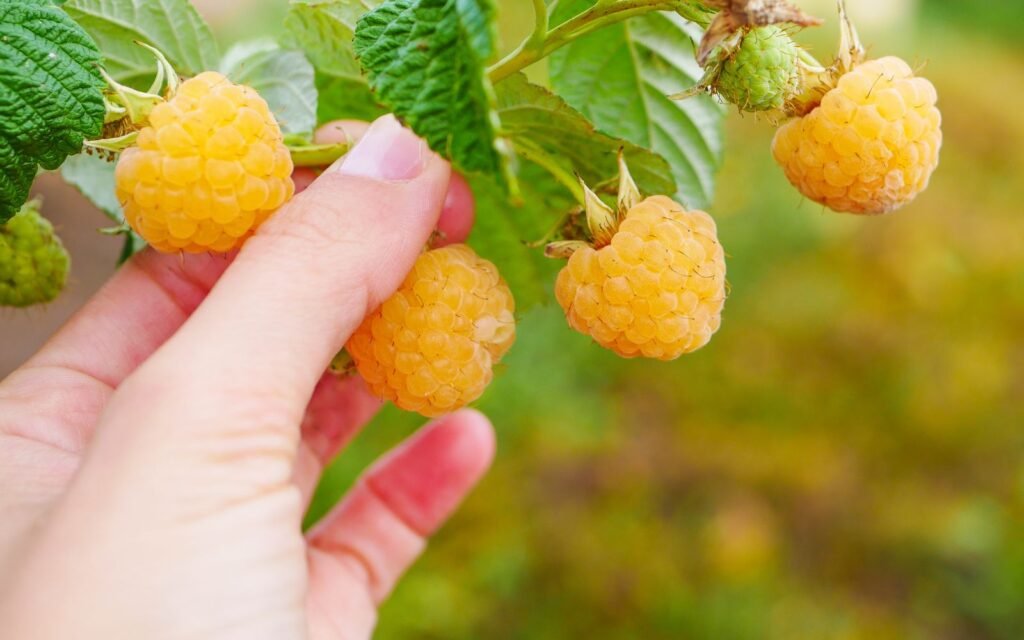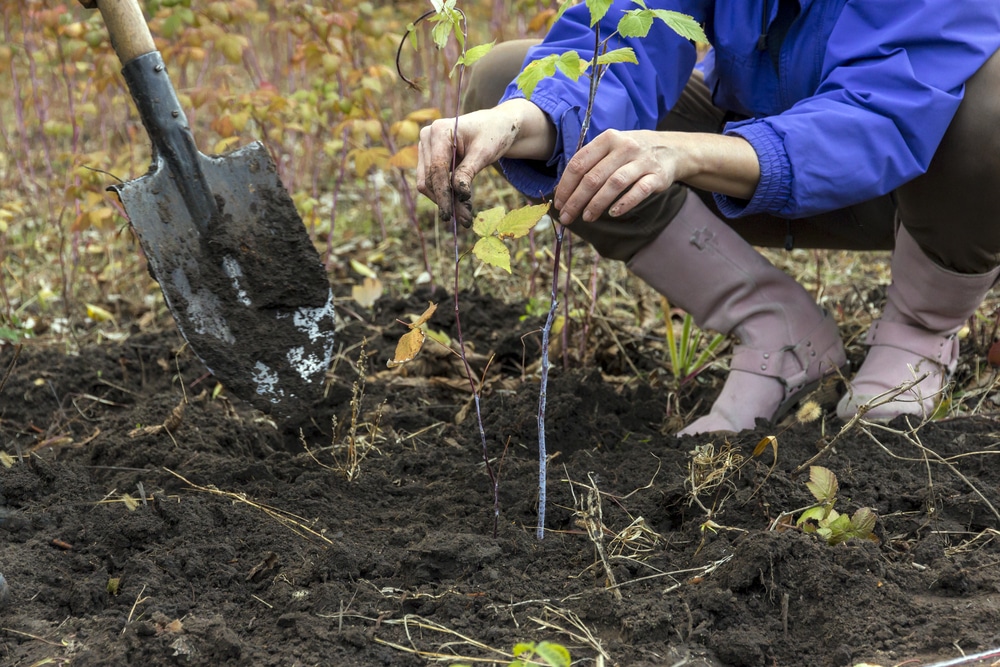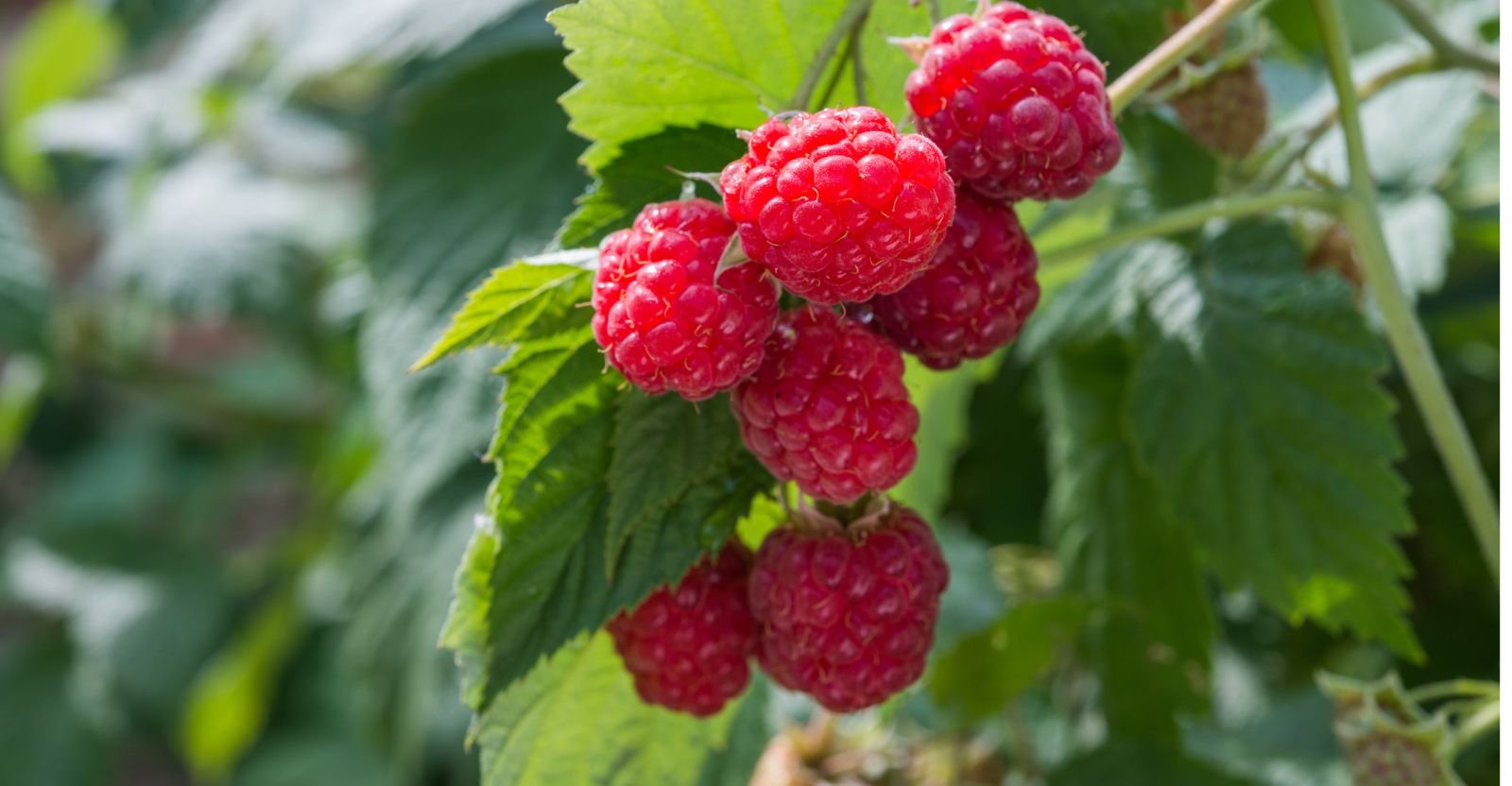
How to Grow and Care for Raspberries on Vine
If you’re thinking about growing raspberries or maybe transplanting them, you’re in the right place! Growing raspberries can be a rewarding experience, whether you’re planting them in your garden or enjoying them as houseplants. This guide will walk you through everything you need to know about growing, transplanting, and caring for raspberries.
Let’s first dive into why you might want to grow raspberries.
Benefits of Raspberries

Raspberries aren’t just delicious, they’re packed with health benefits. They’re rich in vitamin A, folate, antioxidants, and minerals. The fruit itself is high in fiber and vitamin C, while the seeds are a great source of vitamin E, which has many health benefits.
Raspberry leaves also have medicinal properties and are used in various home remedies, including treating morning sickness, improving digestion, and even helping to soothe sore throats. Research shows that raspberries, particularly red raspberries, have cancer-preventing properties. They contain ellagic acid, which helps inhibit the growth of cancer cells while promoting healthy cell development.
Types of Raspberries

Raspberries, often referred to as brambles, are classified based on the season and color of their fruit. There are two main categories of raspberry plants: Primocane and Floricane.
- Primocane: These are the first-year raspberry plants that are still in the growing phase. They grow vertically and expand from the plant’s crown.
- Floricane: In the second year, these plants start to bear flowers and fruit.
Here are the main types of raspberries:
- Summer-Bearing Red Raspberries: These bear fruit from May to June, growing from last year’s canes.
- Everbearing (Fall-Bearing) Red Raspberries: These produce flowers and fruit on the tip of the current season’s growth, starting in late summer and continuing into the fall. If left unpruned, they can also produce a second, smaller crop in the summer.
- Black Raspberries: These are typically harvested in June or July, and the plants don’t require a trellis since they grow as shrubs.
There are also many varieties, such as:
- “Willamette” and “Meeker” (popular in the Pacific Northwest, but not suited for hot climates).
- “Canby” (thornless with large berries).
- “Heritage” and “Oregon 1030” (ideal for heat-tolerant climates).
- “Munger” and “Cumberland” (black raspberries).
How to Grow Raspberries

You can grow raspberries either from seed or from a sucker (the most common method). Here’s how to do both:
Growing Raspberries from Seeds

Growing raspberries from seed is a slower process and requires more patience than growing them from a sucker. Here’s how to get started:
- Collect Seeds
Gently mesh ripe raspberries in a colander to separate the pulp. Run the mesh under water to remove the pulp, leaving just the seeds. Let the seeds dry on a paper towel for 24 hours. - Plant the Seeds
Prepare a nursery tray with low compost and potting soil. Press the seeds gently into the soil and cover them with a thin layer of soil. Keep the tray in a well-ventilated, partially sunny area. - Water and Wait
Keep the soil moist but not soggy. Raspberry seeds typically take 4-6 weeks to germinate. - Transplant
Once your seedlings are about 1-2 inches tall, transplant them into larger containers. In their first year, keep them under low sunlight and water regularly. - Move Outdoors
In the spring, once they’re strong enough, you can transplant them outside.
Growing Raspberries from Suckers

This is the easiest and quickest way to grow raspberries. Simply take suckers (small offshoots from the root system) from an established plant and transplant them into your garden.
Soil and Sun Requirements for Raspberries

Raspberries thrive in well-drained, slightly acidic soil with a pH between 5.5 and 6.5. You can test your soil pH and amend it as necessary using lime to raise pH or organic compost to improve drainage and soil structure.
For best results:
- Soil: Use soil with good drainage and aeration. Consider raised beds if your garden’s soil doesn’t drain well.
- Sunlight: Raspberries need at least 6 to 8 hours of sunlight each day. Make sure to plant them in a sunny spot away from the shade of large trees.
Planting and Transplanting Raspberries

When planting raspberries, choose a spot with good sunlight, away from other raspberry plants to avoid disease. The best time to plant is in early spring while the plant is dormant.
- Prepare the Site
Soak the plant roots in a half-strength vitamin B1 solution for 6 hours before planting to help them establish. Dig a hole and add compost or fertilizer before planting. - Spacing
Space plants 2-3 feet apart for red raspberries and 4 feet apart for black and purple raspberries. - Water and Mulch
Water the plants immediately after planting, and mulch around the base to retain moisture and suppress weeds.
Pruning Raspberries

Pruning is essential for healthy raspberry plants. Red raspberries should be pruned after harvest, removing all fruit-bearing canes. For everbearing varieties, prune after the fall crop, cutting down the previous season’s canes to the ground. This encourages new growth.
Regular pruning helps improve air circulation and ensures a better yield. Remember to remove any weak or diseased canes to prevent the spread of disease.
Trellising and Supporting Raspberries

Raspberries need support to help them grow vertically and prevent the fruit from touching the ground. Installing a trellis makes harvesting easier and helps with pest management.
- Trellis Types: Common trellis systems for raspberries include the Hedgerow, T-shape, and V-shape trellis. For summer-bearing raspberries, you may need a 3-4 foot high trellis, while everbearing varieties can be trained using a T-trellis system.
- Trellis for Black and Purple Raspberries: These types typically don’t require a trellis, but a Hill system trellis can be used to support the plant.
Watering and Fertilizing Raspberries

Raspberries need about 1 inch of water per week. Be careful not to overwater, as this can cause root rot. Drip irrigation or a soaker hose works best to keep water at the roots, avoiding the plant’s foliage.
For fertilizing:
- Nitrogen: Apply nitrogen-rich fertilizer to boost growth, especially during the first season.
- Additional Fertilizers: During the second year, consider adding additional nitrogen if the leaves are yellow or light green.
Transplanting Raspberries

To increase the size of your raspberry patch or divide an overgrown plant, transplanting is the way to go.
- Choose Healthy Plants: Ensure that you transplant healthy, vigorous plants with green leaves.
- Timing: The best time to transplant is when the plant is dormant (late fall or early spring).
- Prepare the Site: Dig a hole and add compost a couple of weeks before planting. Make sure the soil is well-drained.
- Water: After transplanting, water the plant thoroughly and keep the soil moist.
Common Raspberry Diseases and Pests

Raspberries can be affected by various pests and diseases, such as:
- Anthracnose: This disease causes scaly spots on the leaves and can affect berry production. Prune infected areas and use a delayed dormant spray to control it.
- Aphids: These pests suck the plant’s sap and can spread viruses. Use insecticidal soap or remove them manually.
- Whiteflies and Mealybugs: These tiny pests can cause significant damage, but they can be controlled with insecticides.
Regularly monitor your plants for pests and diseases, and take action early to keep them healthy.
With the right care, raspberries can thrive in your garden and provide you with delicious, healthy fruit year after year. Follow these tips for successful planting, pruning, and harvesting, and enjoy the sweet rewards of your labor!
FAQs for Growing and Caring for Raspberries
1. What are the best growing conditions for raspberries?
Raspberries thrive in well-drained, fertile soil with a slightly acidic pH (around 5.5 to 6.5). They prefer full sun for at least 6 hours a day to produce the best fruit. Ensure they have good airflow and space to grow, as crowded conditions can lead to disease problems.
2. How do I plant raspberries?
Plant raspberries in the spring or fall, spacing them about 2-3 feet apart in rows. Dig a hole large enough to spread the roots, and bury the plant so that the crown is level with the soil surface. Water well after planting and apply mulch to retain moisture and suppress weeds.
3. How often should I water raspberries?
Raspberries require consistent moisture, especially during fruiting season. Water deeply once a week, ensuring the soil is moist but not soggy. In hot, dry weather, you may need to water more frequently. Always water at the base of the plant to avoid wetting the leaves, which can encourage disease.
4. What kind of support do raspberries need?
Raspberries are typically grown on trellises or other forms of support. This helps keep the plants upright, improves air circulation, and makes harvesting easier. Use wires, posts, or a dedicated raspberry support system to train the canes and prevent them from sprawling on the ground.
5. How do I prune raspberry plants?
Pruning is essential for healthy growth and fruit production. For summer-bearing varieties, prune the canes after fruiting, removing the old, spent canes that bore fruit. For ever-bearing varieties, prune in late winter or early spring, cutting back the canes to ground level to promote new growth.
6. When do raspberries typically start producing fruit?
Raspberries typically begin producing fruit in their second year after planting. Summer-bearing varieties generally produce fruit in late spring or early summer, while ever-bearing varieties produce two harvests—one in late summer and another in the fall.
7. How can I encourage more raspberries to grow?
To encourage healthy growth and increased fruit production, regularly remove dead or damaged canes, and ensure the plants are getting adequate sunlight, water, and nutrients. Fertilizing in early spring with a balanced fertilizer can also boost growth, but avoid over-fertilizing, as this can lead to excessive leaf growth with fewer fruits.
8. What pests or diseases affect raspberries?
Common pests include aphids, spider mites, and Japanese beetles. Disease problems like raspberry rust, powdery mildew, and verticillium wilt can also affect plants. To control pests, use organic insecticides or neem oil and regularly check for signs of damage. Proper spacing and good airflow around the plants help prevent many diseases.
9. How do I harvest raspberries?
Raspberries are ready for harvest when they easily pull off the plant, leaving the white core behind. They should be fully colored (depending on the variety—red, black, purple, or golden) and slightly soft to the touch. Harvest in the morning when it’s cooler to prevent the fruit from becoming too soft or mushy.
10. How do I store raspberries after harvesting?
Raspberries are delicate and best eaten fresh. However, if you need to store them, place them in a shallow container lined with paper towels and refrigerate them. They can last for up to 2-3 days. You can also freeze raspberries by spreading them in a single layer on a baking sheet to prevent clumping, then transferring them to a freezer bag for long-term storage.
11. Can I grow raspberries in containers?
Yes, raspberries can be successfully grown in containers. Choose a large, deep container (at least 18 inches in diameter) with good drainage. Use high-quality, well-draining soil, and ensure the plant gets plenty of sunlight. Container-grown raspberries may require more frequent watering and fertilizing, as pots dry out more quickly than the ground.
12. Can I grow raspberries in colder climates?
Yes, raspberries can be grown in colder climates, but you’ll need to choose cold-hardy varieties, such as ‘Heritage’ or ‘Boyne,’ that can withstand frost. You may need to provide extra winter protection by mulching around the base of the plants and covering the canes to prevent damage from freezing temperatures.
Conclusion
Raspberries are a rewarding fruit to grow with the right care and attention. By planting in the right conditions, providing proper support, and pruning regularly, you can enjoy healthy, bountiful harvests year after year. Whether you’re growing them for fresh fruit, jams, or desserts, raspberries are sure to bring joy to your garden. Happy gardening and enjoy the sweet rewards of your efforts!

